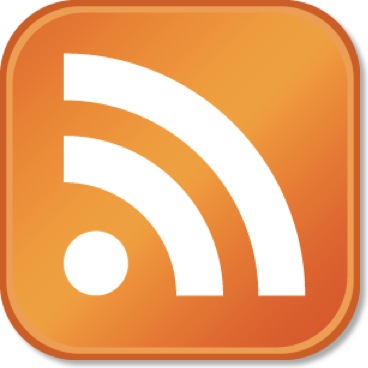 Telescopes
Telescopes
I get asked this question regularly. I wish I could say “learn enough about telescopes and the night sky so you can answer that question yourself, because that’s what it takes to choose the right telescope” but that advice is ignored because it is clearly unsatisfactory. If you press me for an answer, this is what you’ll get.
Half of this is from guest blogger Keith Enevoldsen (my dad!) who didn’t know he was writing for this blog when he wrote these words, but it is sound advice and well worded.
Your First Telescope:
Whatever you do, don’t buy a scope that “looks like a telescope.” What I mean is, if it looks like a long thin tube, or you can picture Galileo using it, it’s the wrong thing. You want something short and fat. “Willowy,” “elegant,” and “sleek” are not the right words to describe the right telescope. The one exception to this rule is the Galileoscope, which I will discuss in much more detail at a later date.
Price:
Telescopes less than about $200 generally have poor optics. If you want to go much below about $200, then get some quality binoculars instead.
AstroScan:
My favorite beginner telescope is the Astroscan from Scientifics. It is about $300. It’s cute and fun and simple. It has a very wide field of view (as opposed to very high magnifying power) and a ball-shaped bottom, so you can point it by simply moving it with your hands — no fiddly knobs and no computer to figure out. It’s easy to take camping where skies are dark. You just plop it on the ground or on a table or on the hood of your car. You can get a tripod for it if you want one, but you don’t need one.
Orion StarBlast:
The other decent scope in that price range is the Orion StarBlast. It’s basically an AstroScan in a different shape. The mount is very easy to manipulate – just grab and point. It has a more complex finder-scope on the side than the AstroScan, which means it’s easier to mess up, but it is also slightly easier to use than the AstroScan’s sight.
I also have to admit that Orion got me with this one. They donated a StarBlast to Pacific Science Center. I was quite skeptical at first, since I love the AstroScan, and I didn’t believe that anything could measure up. After I used it a few times I was sold. It’s a good scope. If I were buying a new scope, I’d buy an AstroScan, but this would be a close second.
Both of these scopes are compatible with all the normal-sized eyepieces available on the market. Most telescopes you get from a department store use a different sized opening, so you need to use their eyepieces, and you can’t slowly upgrade over time.
Binoculars:
Good binoculars and a tripod are usually the best option for beginning stargazers, but the scopes we mentioned are pretty close to just as good. We use the Meade Travelview 7x50s (about $30) here at Pacific Science Center because Meade donated 10 pairs (Thank you, Meade!), though anything that seems decent will work – even little birding binocs. If you want to be a little bit careful about your binoculars, get a pair of 7x50s from a company that you’ve heard of. If you’re going this route, also check to see if there is a tripod adapter that works for your binoculars or build one yourself.
What’s Good for Beginners To Look At:
Remember, the Moon is by far the best thing to look at in the sky. The Moon looks huge and fantastic with a wide-field telescope like the Astroscan — you can see the whole Moon and lots of craters. The Moon also looks pretty good through good binoculars. The Moon changes every day — you see different craters each day. You don’t need dark skies to see the Moon. You can see some other things with a backyard telescope (that you can’t see with binoculars), like the rings of Saturn, and nebulas, but almost everything is very tiny or very faint compared to the Moon.
If you want higher magnification, so you can clearly see the stripes on Jupiter, the icecaps on Mars, and the gap in the rings of Saturn, then you will have the problem of how to accurately point a telescope with high magnification, and how to continually move the telescope to counteract the turning of the earth. The best solution is to use a computer and a motor to point the telescope, but this gets expensive. But the cheaper manual fiddly knobs are a pain. Also, if you don’t use a computer to aim your telescope, you need to be sure you have a good finder scope mounted on the side.
This is why I recommend a wide-field telescope like the AstroScan (or good binoculars) for beginners.
Want More?
Sky and Telescope’s advice:
Basics of Telescope Buying
Buying a Telescope as a Gift










This really helps a lot!!!! Thank you!!!
I am really interested in orrey(s).Are there any quality ones out there?
Good question – the only one I’ve ever used is basically this one: http://scientificsonline.com/product.asp_Q_pn_E_3053597 – and I think I’ve personally broken three of them. So, not a glowing recommendation, but bear in mind that every prop I use is often handled by thousands of people.
I’ve always wanted one of those really pretty steampunk brass-and-wire orrerys. That would be so pretty.
I am actually going to take mine back, I bought it yesterday. I got a venture . Where can I buy a good one in Seattle asap
Check with Captain’s Nautical in Interbay and Close Scientific Instruments on 4th Ave.
In that price range, no good manufactures to remoncemd. I DO remoncemd a telescope, as you might want to look at the moon and near planets as well, and a tripod makes it much easier, as your hands won’t shake. Try Wal-Mart. I saw a not too bad one there the other day for about $ 225.00, and a reflector one, not a long tube with lenses. It looked like a bargain. You won’t find too many used ones out there, but you might get lucky.
I continue to stand by what I said above, but it’s okay for you to disagree with me. I think that starting with binoculars is better for your budget, and if you get bored with them, you’ll have a better idea of what kind of telescope you want.
I’m not finding stores selling telescopes near West Seattle. Can you help me? I’m primarily interested in photographing Puget Sound activity from Alaska Junction and secondarily learning and seeing heavenly objects and groups so I need to evaluate methods of coupling my camera with a modest telescope.
Hi Ray,
If you want a hands-on telescope purchasing experience, I recommend Captain’s Nautical on the way to Ballard. I think there is another place downtown, Close Instruments, but I haven’t visited there yet.
http://www.captainsnautical.com/
http://www.closeinstrumentrepair.com/
-Alice
Thank you. I’ll visit them soon.
Hey Alice,
This is my first visit to your website and it seems great!. I’ve been observing with my second scope a Celestrson CPC800 for two years, and my amateur astronomy experience is just about three. With a star chart I can generally find my way around the sky. Here’s the problem: my cpc is heavy; its difficult to lift it into the car to travel to an observing site with fewer obstructed views than my house. I’ve considered getting a refractor, but you recommend against willowy and elegant, which I interpret to mean refractor. I know the light gathering power is less (for the same money) but I trust it will be sharper and lighter. What is the place for refractors in the amateur astronomy world?
Thanks,
Bruce
Bruce,
I recommend against thin and willowy for FIRST scopes. Once you’re more experienced, then you’ll be weighing the pros an cons yourself, and you’ll really know how important light-gathering power (diameter) is so you won’t settle for a refractor that is too narrow.
Is your CPC 800 the 8-inch folded-optics computerized scope? Computerized scopes are always incredibly heavy, so are good for longer dedicated observing sessions. I think you will also find yourself dissatisfied with anything much smaller in diameter than you’re already using, maybe a 6.5inch or 7inch would be the smallest you’d want to go after an 8-inch.
There is definitely a place for refractors in amateur astronomy. The problem is only with those sold as beginners’ scopes: they are tiny and you can’t see much through them. They’re also paired with frustrating and difficult-to-manipulate tripods. You’re going to want a good, easy to use tripod or mount for any telescope you get. More advanced refractors are fine.
The first thing you need to do to eliminate weight is get a non-computerized scope (if yours is the one I found and is computerized–sorry I couldn’t quite tell if this is not). Second since you’re going for a similar diameter, or maybe a touch smaller, start comparing weights of the different kinds of scopes at that size. I suspect the optics of a refractor at that size are going to be the heaviest. Then, I recommend you look at scopes with composite bodies, and separate tripods that you find easy to lift and manipulate.
My favorite tripod mount for larger telescopes is a smooth alt-az mount from Stellarvue. For astrophotography you will probably still need a computerized scope, in which case there isn’t a lot you’re going to be able to do about weight.
My quickest go-to for observing will always be the AstroScan with a great eyepiece. It is lightweight, decent scope (4 or 4.5 inches?) and it is so fast to set up you can almost literally throw it in the car, drive to the park, wear it over your shoulder walking away from the parking lot, and have it set up in 2 minutes. Bee-you-tee-ful!
-Alice
Thanks.
Bruce